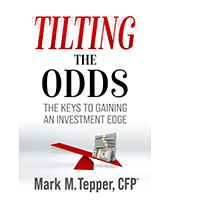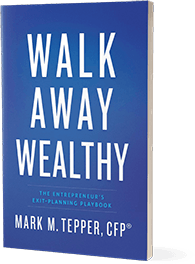What do you do if you’re retired and you need to withdraw money from your retirement portfolio to sustain your standard of living? No one wants to sell their stocks when the market is down 20%—and it’s NOT the smart thing to do. But what options are available? In this episode of The Capitalist Investor, Derek and I share 3 spending strategies that help you avoid taking a loss on your stocks during a bear market.
Outline of This Episode
- [1:08] Don’t sell your stocks—live off your bonds
- [5:00] Consider a home-equity line of credit
- [8:00] securities-based Lending
Don’t sell your stocks—live off your bonds
If you find yourself panicking and trying to figure out how to pay for this year’s expenses, don’t start selling your stock. Instead, dive into an asset class that’s treading water right now: bonds. If you have $1,000,000 in your portfolio with a 60/40 split, that’s $400,000 worth of bonds. If your expenses are $3,500 a month or $50,000 a year, that $400,000 can last you 8 years, if necessary.
Ask yourself, “Will the stock market be in a better place in 8 years?”. In all likelihood, the answer is yes.
We plan for this and have a section of your portfolio dedicated to providing you that paycheck. It isn’t affected by the stock market. When the market is down it’s great to know you have a plan and have that asset allocation. Don’t panic-sell your stocks to get by—your bonds will get you through.
Embrace an out-of-the-box strategy: A home-equity line of credit
If you don’t want to deplete your bonds, consider taking out a home-equity line of credit in lieu of taking money out of your retirement. If your mortgage costs you 3% per year but your investment portfolio earns 5% you will come out ahead by NOT paying your mortgage off.
We get it, it’s hard to make a decision that keeps you in debt longer. But what’s worse: paying 3% interest or selling stock when it’s down 20%? The answer is clear. In a bear market, don’t take it out of your portfolio, take it out of your home equity line of credit. When the market rebounds, take that money out of your portfolio to pay off the line of credit.
We had our analysts run a scenario where they examined the benefits of this strategy. They found that it added almost 1% annually to the average return over the course of retirement. As you get closer to retirement these moves make sense and at the end of the day, greatly impact the money in your pocket.
Another option is securities-based lending
TD Ameritrade and Fidelity—our Custodians—will loan you a percentage of the money in a non-qualified account. Other brokers may also do the same. The interest rate may be higher than a home-equity line of credit, but it’s still far better than having to sell your stock and take a hit.
This strategy makes sense if you don’t have any of your portfolio allocated to bonds. Or, if you don’t own a home and therefore don’t have access to a home-equity line of credit. It’s not tax-deductible and can be available quickly.
There ARE options available to maintain your current strategy of living—listen to the whole episode for all the details on the 3 options outlined above.
Connect with Derek Gabrielsen
- Twitter: @DerekGabrielsen
- Follow Derek on LinkedIn
- Send Derek a message here
Connect With Mark Tepper
- Twitter: @MarkTepperSWP
- Follow Mark on LinkedIn
- Send Mark a message here
Send your questions and comments to us at info@SWPConnect.com
Subscribe to The Capitalist Investor
Show Notes by
PODCAST FAST TRACK
https://www.podcastfasttrack.com
 Enter your information below, and we will email you our new eBook, Tilting the Odds
Enter your information below, and we will email you our new eBook, Tilting the Odds




